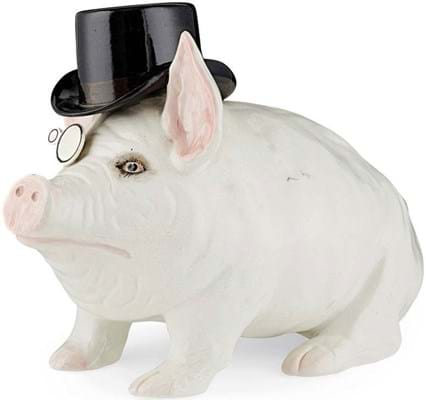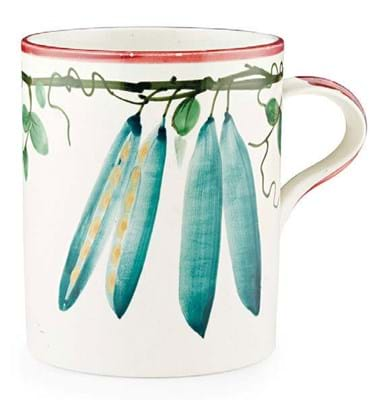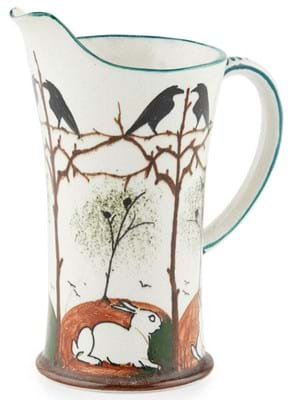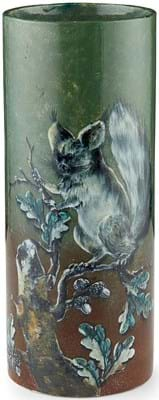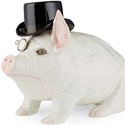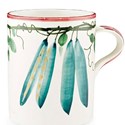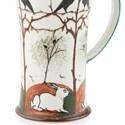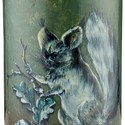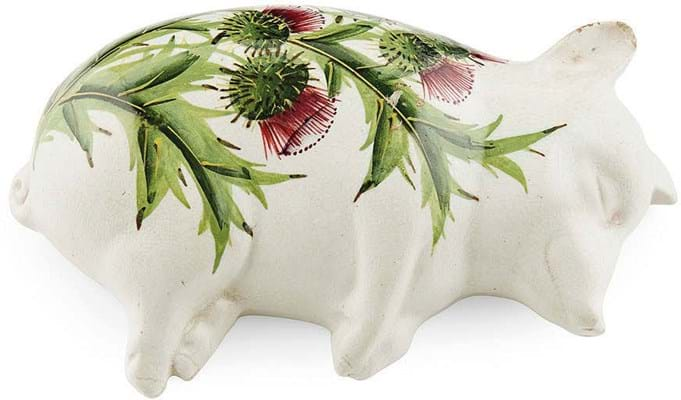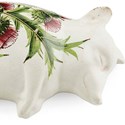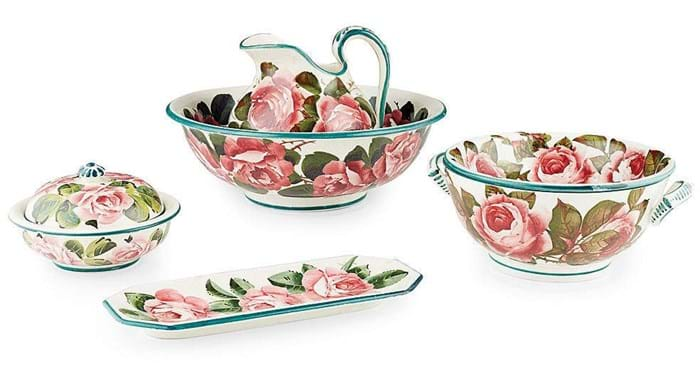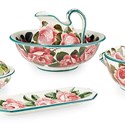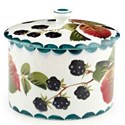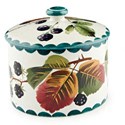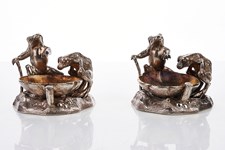Wemyss ware – the characterful products of an unlikely partnership between Fife pottery owner Robert Methven Heron (1833-1906) and a Bohemian craftsman he encountered on the Grand Tour – has a long collecting history.
Desirable in its day both north and south of the border (much of the factory output was sold via the upmarket London retailer Thomas Goode), these idiosyncratic pots were later the subject of a vibrant micro-market. As early as 1976 Sotheby’s was pushing this niche with an exhibition held at Belgravia. Famously, the Queen Mother was a fan.
Key month
August is traditionally a market-defining month for Wemyss. Designated sales were held close to the ‘Glorious Twelfth’ by Sotheby’s at Gleneagles, then by Bonhams and latterly by Lyon & Turnbull (25% buyer’s premium). There were 118 lots on offer at the Edinburgh saleroom on August 14.
Wemyss is currently displaying all the textbook symptoms of a polarised market. Rarities continue to appeal to the small audience of top collectors but, with fewer ‘entry-level’ buyers in the market, standard wares are often sold at bargain prices.
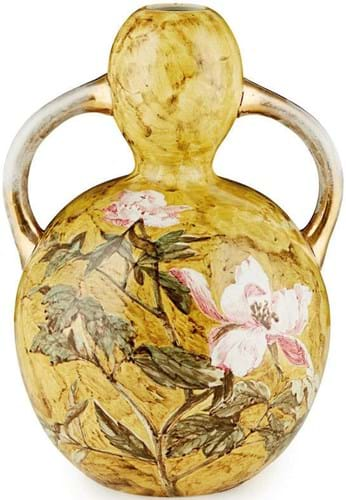
A twin-handled 15in (37cm) vase decorated by Karel Nekola with flowering peony roses on a mottled ground dated 1897 – £3600 at Lyon & Turnbull.
At the top end are pieces such as a rare 15in (37cm) twin-handled vase decorated by Karel Nekola (c.1857-1915), the talented young Czech immigrant who became the head of the decorating shop c.1882. He also married Heron’s cook and the couple had six children.
This vase with flowering peony roses on a mottled ground was produced in the first decade of the Heron-Nekola partnership and was later given by Nekola as a wedding present for the current vendor’s great-grandmother, c.1894. Her stepfather, Robinson (Ralph) Dixon, ran a china shop in Leith. It came for sale with an estimate of £1000-1500 but sold at £3600.
From the latter end of Nekola’s career, an 11in (27cm) plaque painted with widgeons in a coastal landscape, signed and dated 1908, took £1100.
For more typical Wemyss domestic wares, pattern dictates price. A large 5½in (13.5cm) mug painted with garden pea pods (a rare design) sold at £3600 (estimate £800-1200) while a similar mug decorated with rabbits and crows in a landscape – the so-called Earlshall pattern made for sale at the regular fetes held at Earlshall Castle in north-east Fife – sold for £800. Both pieces had hairline cracks – a familiar issue with Fife-period Wemyss which is prone to damage.
Prize porkers
Pigs and cats are the signature Wemyss pieces.
Remarkable prices were being achieved just over a decade ago – including the £20,000 bid for the tabby from the Drambuie collection sold by Lyon & Turnbull in 2006 or £29,000 apiece bid at Sotheby’s Gleneagles for two fruit-decorated sleeping piglets in 2004.
Today’s price ceiling has returned to sanity. The August 14 sale included a large 16in (46cm) white glazed seated pig with applied top hat and monocle – perhaps a reference to Theodore Roosevelt, the US president around the time of its manufacture.
It has typical impressed marks (Wemyss Ware RH&S) and the printed mark for Thomas Goode. A similar pig sold at Sotheby’s Gleneagles in 1998 for £4600 and a pair brought £11,000 in 1997. This one took £4800 (estimate £4000-6000).
A 14in (40cm) pig covered in a pink glaze sold at its top estimate of £3000 and one of those rare 6in (16cm) slumbering porkers in the Thistles pattern managed £3400 (estimate £2500-3000).
Seemingly for these models we are back to the price levels of the early 1990s.
A small 6in (15cm) pig covered in an unusual brown glaze sold at £1100 but there were modest bids of just £100 each for a similar green-glazed model, with a repaired foot and a small Shamrocks pattern pig decorated by Joe Nekola (Karel’s son) in the 1930s. By that time the ‘Wemyss’ factory had relocated to Bovey Tracey in Devon.
From the final era of factory production was a graduated set of three mid 20th century Plictha Wemyss cats in the Cornflower pattern, each signed Nekola Pinxt. They sold at £1400.
Market realities
A good selling rate of 86% (102 lots) was helped by estimates that reflected the new market realities. In truth, prices have tumbled at the lower end.
Many of the typical Cabbage Rose or Black Cockerel wares sold as group lots averaged out at just £30-40 apiece. Time was when a textbook model such as a Cabbage Rose pattern heart-shaped inkwell might be £250-350. Here one sold with a similar 12in (30cm) tray for £150.
A pair of Brambles pattern biscuit barrels and covers decorated by Edwin Sandland (Nekola’s successor from Staffordshire who worked at Wemyss until 1928) sold for just £100. One carried a paper label showing it had been part of the seminal Belgravia exhibition in 1976.
It’s tough going for vendors but welcome news for buyers. With plenty on offer under £200, Wemyss is once again the largely affordable collectable it was a generation ago.


